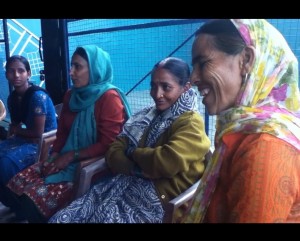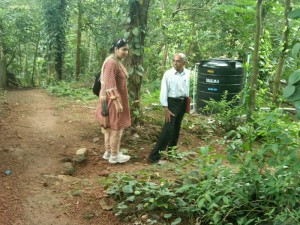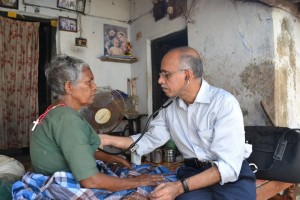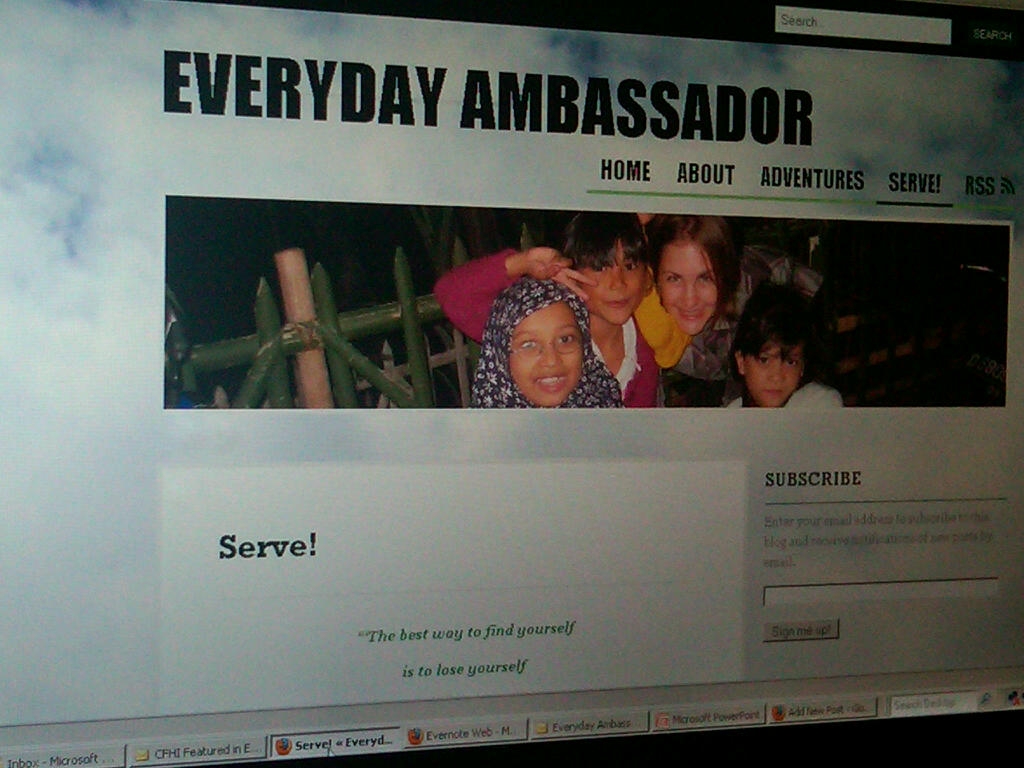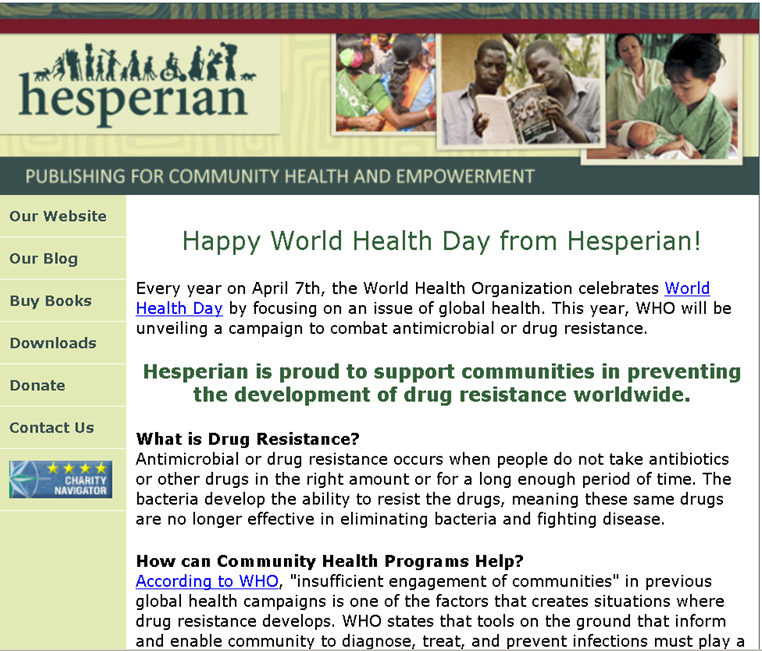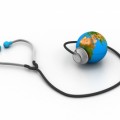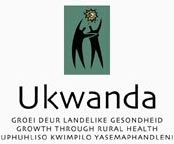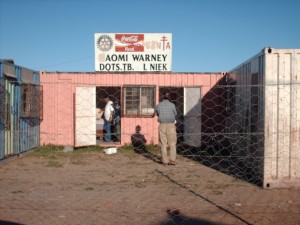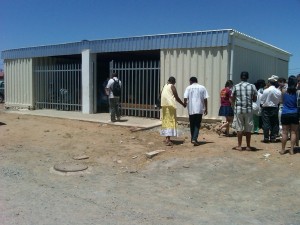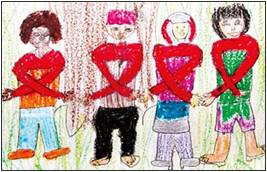In 1998 Ecuador was the first Latin American country to name reproductive and sexual health as constitutionally guaranteed human rights. Continue reading
Author Archives: Jessica Evert, MD
Celebrating 20 Years of CFHI
Happy Birthday, Child Family Health International!
2012 marks the 20th anniversary of CFHI’ s transformative Global Health Education Programs and Community Empowerment. This milestone gives us a chance to celebrate and to look back on the impact of CFHI. Continue reading
World AIDS Day 2011
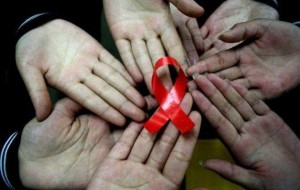 On this 30th anniversary, World AIDS Day gives us a time to pause and take in the enormity of this disease that has ravaged so much of humanity. There will be much written today about how we are turning a corner and that the epidemic is showing signs of coming to an end. It is important to celebrate and salute the great accomplishments in the fight against AIDS but it is also important to note that we are a long way from taking a victory lap. We do need to build momentum in the fight, so the accolades are helpful as long as they help generate enough buzz and enough energy to follow through by implementing and building on the advancements that have been made.
On this 30th anniversary, World AIDS Day gives us a time to pause and take in the enormity of this disease that has ravaged so much of humanity. There will be much written today about how we are turning a corner and that the epidemic is showing signs of coming to an end. It is important to celebrate and salute the great accomplishments in the fight against AIDS but it is also important to note that we are a long way from taking a victory lap. We do need to build momentum in the fight, so the accolades are helpful as long as they help generate enough buzz and enough energy to follow through by implementing and building on the advancements that have been made.
Unfair
The latest numbers show that there are about 34 Million people with HIV world-wide. At CFHI, because of our international partnerships, we are acutely aware that among all the world’s AIDS statistics it is particulary sobering to note that 60% of all cases are in Southern Africa and that South Africa has the horrible distinction of being the country with the most cases. Also it is important to note that statistics shoe that among all Asian countries, India has the most cases. When we look at global health disparities in general, we see how unfair the realities of burden of disease and access to healthcare are but in the context o this particular disease, it is somehow even more shocking. Try to take some time this World AIDS Day to educate yourself. The World Health organization has a wealth of information, you can start at this link.
One of the great privileges for me as part of CFHI, is the opportunity I get to visit doctors, nursers, and other healthcare workers in the field. As you really cannot even begin to imagine, communities where the prelevance of HIV/AIDS is very high, are impacted in a variety of ways. On World AIDS Day, I think back on the doctors and nurses in hospitals that are inundated with patients due to the epidemic yet they still push on, they still show up even when success is not a common part of their day. Finding local health professionals who are dedicated to their own underserved communities and trying to support them in their work is at the heart of what we do. We see them in hospital wards that are overflowing, we see them on strenuous trips to rural areas to test, educate, and treat -thus making treatment and healthcare accessible to more of the population. We see them in hospitals where the staff room has become a small ward or infection control area thus leaving them spending long hours working with no place to go for a break. We see them in clinics working tirelessly as as line of patients stretches out the door and down the street, more than a city block. We see them morn the loss not only of patients but of so many of their colleagues, and yet they continue. We see them in these situations every day, and we see them more dedicated and more earnest in their efforts each day. These are real heroes in this global fight and we salute you on this World AIDS Day and we pledge our continued efforts to help support and champion your work.
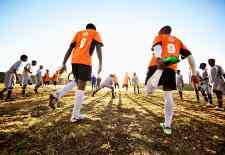 On this World AIDS day, 2011, it is particularly wonderful to note that a new film is debuting in South Africa. Inside Story: the Science of HIV/AIDS will be premiering across South Africa. A wonderful attempt to target the exact population that the epidemic is targeting –young people. Using live action, computer animation and, yes, football (soccer), the goal is to educate through entertainment. Actors from different African countries are participating in hopes that the film will gain audiences across Africa. In addition to a love story and a sports story, the film shows through animation what is happening inside the body as HIV and AIDS run their course. The effort deserves a two thumbs up even though we have yet to actually see the whole film. We hope that this film can be more effective than any drug at combating the disease.
On this World AIDS day, 2011, it is particularly wonderful to note that a new film is debuting in South Africa. Inside Story: the Science of HIV/AIDS will be premiering across South Africa. A wonderful attempt to target the exact population that the epidemic is targeting –young people. Using live action, computer animation and, yes, football (soccer), the goal is to educate through entertainment. Actors from different African countries are participating in hopes that the film will gain audiences across Africa. In addition to a love story and a sports story, the film shows through animation what is happening inside the body as HIV and AIDS run their course. The effort deserves a two thumbs up even though we have yet to actually see the whole film. We hope that this film can be more effective than any drug at combating the disease.
CFHI Listed in USA TODAY as Trusted Charity
Today the editors of USA TODAY added a Special Section to their national newspaper called Sharing in the USA. This is an annual attempt to focus on charitable giving. Included in this section is a list of national charities that have earned the Seal of the Better Business Bureau as an Accredited Charity. Of all the nonprofit organizations in the USA, only about 300 have met this set of rigorous and comprehensive standards that are independently researched and verified by the Better Business Bureau in Washington DC. The 20 standards cover Governance, Fund Raising Practices, Finances and Financial Reporting, Donor Privacy and Transparency of national charities.
CFHI is proud to be a Seal Holder of the BBB and to have, once again, made this list. It is a testament to the hard work of our Board of Directors and our Staff who are dedicated to  the highest standards of nonprofit management striving to run socially responsible programs with accountability and transparency. All the national Seal Holders are listed on the full page ad under the banner headline: Give With Confidence.
the highest standards of nonprofit management striving to run socially responsible programs with accountability and transparency. All the national Seal Holders are listed on the full page ad under the banner headline: Give With Confidence.
The BBB calls this the Wise Giving Alliance Accreditation Standards and issues a report on national charities which is visible on their website. This is an effort to offer a resource to help those who want to research their charitable giving and have some independent verification of the claims that a charity might make. You can see the report for CFHI as prepared by the BBB earlier this year.
CFHI’s Model for Global Health Electives Included in Oxford University Press Publication
“Global Health Ethics is once again in the forefront of discussion with the recently published Oxford Handbook of Neuroethics chapter emphasizing the relevance of biomedical, clinical and public health ethics within the global medical and academic community. Child Family Health International’s (CFHI) Evaleen Jones M.D., Jessica Evert M.D., Scott Loeliger M.D., and Steven Schmidbauer co-authored the chapter on the importance of establishing and sustaining an ethical framework for educational global health programs.
So reads the beginning of the Press Release for CFHI issued today. Needless to say, we are all very proud and very happy to have this recognition especially from such a noted publisher as Oxford University Press. The portion that CFHI contributed to this chapter on Global Health Ethics is an attempt to describe our model of working in underserved communities by identifying local experts and building on the inherent strengths of the communities. We have seen over and over again low-resource settings where amazing things are being accomplished every day in patient care due to extremely dedicated local professionals. We see their deep commitment to serving the people and we join together with the local health professionals to design Global Heath Education Programs that are open to international students and trainees. You can read our submission here but I want to take this opportunity to thank all our international partners who have chosen to work with us to develop this model and make it successful for the last 20 years. No partnership is one-sided and we are deeply indebted to all the local doctors and nurses, hospital and clinic staff, local coordinators, host families, language teachers, drivers and many others who make our international programs function so well, even in some very challenging circumstances. Our hats are off to all members of the CFHI global family –you all share in this recognition!
Read the full CFHI Press Relase and Chapter.
The Rio Political Declaration
Heads of State vow to “achieve social and health equity.” Students respectfully ask for more specifics.
Last week, Heads of State, Ministers, government representatives, and leaders of different sectors met in Rio de Janerio at the WHO World Conference on Social Determinants  of Health. (Writing and discussions about social determinants of health can often get lost in very academic and sterile sounding language, so it is important to keep it as close to real life as possible.) What is important about the World Conference on Social Determinants of Health (WCSDH) in Rio is that 125 nations pledged their commitment to work to promote awareness, develop policies, and support programs to transform certain social factors that play a significant role in determining whether or not a person will be healthy. The U. S. Centers for Disease Control uses the following words in an attempt to define ‘Social Determinants of Health’, “…complex, integrated, and overlapping social structures, and economic systems that are responsible for…” As you can see, we are already getting off into language that feels far removed from the daily realities of global health disparities like lack of access to care. Of course, all this has to do more with economics, education, and politics than with the common understanding of health and healthcare. And that is exactly the point. The fact that many high level political decision makers were present in Rio gives us some hope that there is a growing realization that health ministers alone cannot address these issues.
of Health. (Writing and discussions about social determinants of health can often get lost in very academic and sterile sounding language, so it is important to keep it as close to real life as possible.) What is important about the World Conference on Social Determinants of Health (WCSDH) in Rio is that 125 nations pledged their commitment to work to promote awareness, develop policies, and support programs to transform certain social factors that play a significant role in determining whether or not a person will be healthy. The U. S. Centers for Disease Control uses the following words in an attempt to define ‘Social Determinants of Health’, “…complex, integrated, and overlapping social structures, and economic systems that are responsible for…” As you can see, we are already getting off into language that feels far removed from the daily realities of global health disparities like lack of access to care. Of course, all this has to do more with economics, education, and politics than with the common understanding of health and healthcare. And that is exactly the point. The fact that many high level political decision makers were present in Rio gives us some hope that there is a growing realization that health ministers alone cannot address these issues.
The Rio Declaration referenced a similar conference in 1978 that produced The Declaration of Alma Ata, named for the Russian city –then in the USSR, where health was defined as “…a state of complete physical, mental, and social wellbeing, and not merely the absence of disease of infirmity… .” It went on to declare health as “a fundamental human right.” So we have known for a very long time that the goal of health for a nation and for the world is larger than healthcare, at least as we know it in the United States.
More than thirty years later, it is great to see the Spirit of Alma Ata is still alive. For, as economics, politics, and situational specifics change, it is imperative to remember that fundamental values and rights remain constant. It was right for Alma Ata to call for essential primary healthcare for all the world’s population back in 1978, and it is right for Rio to say today that just because we have not yet achieved the promise of Alma Ata does not mean that we should stop trying.
Progress is being made, but there is much more that can be done. That is why it is good to see the fresh eyes of students also present at the Rio conference. The International Federation of Medical Students (IFMSA) sent a delegation of ten medical students to Rio. Their take on the events of the WCSDH can be found on the IFMSA blog. While the IFMSA students don’t have the experience of some of the professionals who have been working at this for several decades, they do bring a fresh perspective and the ability to think more simply, with less jaded minds. In their critique, Renzo Guinto, the leader of the youth delegation, hits the nail on the head by saying: “The main problem of the Rio Declaration is that it failed to explicitly tell us how the unfair distribution of power, resources and wealth will be addressed, especially by Member States. The WHO Commission on Social Determinants of Health has been adamant about the need to tackle this lingering issue, as health inequities within and between countries are rooted in power relations and resource maldistribution. We understand that changing the current dynamics of power will not happen overnight. However, we believe that this Declaration could have been the watershed moment for leaders to make a strong commitment in making this world a fairer place.”
Students who participate in any of Child Family Health International’s (CFHI) Global Health Immersion Programs are, in fact, immersed into underserved communities around the world. They are mentored by local healthcare workers who face the challenges of few resources and many patients. Students say that they are deeply impacted as they see dramatic health disparities and the realities of the social determinats of health playing out right in front of their eyes. They become some of the most effective advocates for global health equity because they are eye witnesses to the consequences of inequity. And some of them are moved enough to have the experience directly impact their career plans, like Erin Newton who wrote about her experience on the Great Nonprofits Website. “Having never been exposed to the poverty, illness, and disease that I experienced in India, I learned so much about myself and found that I have a true passion for underserved and rural patient care. I learned that much of it can be prevented and I want to help treat these individuals and educate the rural communities as a future physician.”
Along with his challenges, Mr. Guinto also seems to speak for IFMSA in pledging to “…commit ourselves to continue engaging with all sectors involved in the work towards global health equity, spreading awareness of the social dimensions of health to our fellow young people, mobilizing them to take action in their respective communities and countries, doing our part, little by little, but with courage, constancy, and conviction.” We call on all CFHI alumni, whether they be part of IFMSA, AMSA (America), AMSA (Australia), ASDA, NSNA, SNMA, as well as many other groups, or just individual health science students, to read Mr. Guinto article and find the best way to engage in the great effort to achieve heath equity both at home and abroad.
With additional specific yet respectful challenges, Mr. Guinto offers an important contribution to the dialogues around social determinants of health that may require the veterans of this work to take a step back and refocus for a fresh look at what is taken for granted, or thought to be impossible. For it is only that kind of courage that will produce the bold steps needed to truly transform the status quo and bring about the promise of Alma Ata that is still waiting for us all.
World Food Day
Today is World Food Day. The United Nations Food and Agriculture Organization has issued a report that should be on the ‘must read’ list of anyone interested in global health. There is some good news but also some disturbing news that should act as a wakeup call for the world community. Staple food prices are at or near all time highs. One of the most alarming facts in the report entitled Food Prices From Crisis to Stability is that just since last year the increases in the cost of basic food has, “pushed nearly 70 million people into extreme poverty.”
Past Successes Have Not Kept Pace
The report points out that while the world’s population doubled between 1960 and 2000, there were significant advances in agriculture that allowed food production to “meet and even exceed demand in many countries.” Unfortunately, the investments in research that were made, by both rich and poor countries, to produce the much needed innovations have not been maintained in recent decades. There has been a 43% decrease in government spending on research and development in the area of agriculture in the last 30 years. Therefore while the population of the world continues to increase, food production has not kept pace.
The last time food prices were this high was in 2008, when the price of various staple foods shot up very quickly and there was rioting in over 20 countries as a result. Certainly the global
economic situation is in even less shape to deal with record high food prices today. What’s worse is that due to the inability of food production to keep pace, “The global market is tight, with supply struggling to keep pace with demand and stocks are at or near historical lows.”
Promising New Successes
While the report warns that food price volatility may become an unsettling fact of life for the foreseeable future, it also gives some success stories that offer great hope. If we can prioritize research and development and scaling of existing successes, we may be able to prevent some of the volatility that now seems inevitable. Some scientific advances in Africa and Asia are resulting in higher yields but much more needs to be done in this area. Some countries have made increasing their food production a priority by encouraging agricultural land use and supporting research. Other countries like Mexico have been proactive in targeting assistance to some of the 70 million globally who are the new poor. Through carefully monitored programs tied to the education system, the Mexican government has been able to provide assistance to one in four families who have been hardest hit by rising food process. Even in these difficult times, this effort has, “…been credited with improving the health of children and adults, and raising nutrition and school enrollment levels.”
As we advocate for improved basic healthcare, we must also advocate for smart basic development that learns from the past and is doing the necessary research to keep up with our current and future needs. For the cornerstones of global public health continue to be water, food, sanitation, and education.
Empowerment Means Having a Voice
Voices of empowerment from women in rural Northern India
About an hour outside of the north Indian city of Dehradun, the terrain starts to change as you begin to enter the foothills of the Himalayas. Paved streets give way to winding dirt roads, some seemingly carved into the incline of the mountain like the etches of a screw and only wide enough for one vehicle. Luckily almost no one in this area has a car, so we are usually sharing the road only with the monkeys and the goats. On this particular trip, the monsoons have not yet released India from their grip and our vehicle struggles on the loose dirt and gravel as the torrents of rain pour down. Oddly enough, here, about as far away from an urban setting as you can get, I’m reminded of a car wash because the sheets of rain are hitting the car so hard that you can feel their force on the hood of the vehicle like the power washes you can get back home.
 Luckily, as we reach the village of Patti, the torrents subside and we are able to disembark without getting too wet. CFHI has supported the operation of a clinic in this area since the late 1990s –it is the base of the CFHI Rural Himalayan Global Health Immersion Program. In the last seven years, we have trained women elected from the surrounding villages as health promoters. Previous to these efforts, there was no organized healthcare happening in this area. Today is a meeting of the health promoters, some having walked as many as five hours for the event (a fact that always humbles me greatly). An initial three year training effort took women with little or no formal education and taught them the basic skills of health promotion. Many of them come from a long line of traditional birth attendants, so they already had some experience in the area of health. After the initial training, they have been able to monitor women throughout their entire pregnancy. Additionally, they instruct their communities on many topics: sanitation, nutrition, immunizations, hygiene, and family planning, to name a few.
Luckily, as we reach the village of Patti, the torrents subside and we are able to disembark without getting too wet. CFHI has supported the operation of a clinic in this area since the late 1990s –it is the base of the CFHI Rural Himalayan Global Health Immersion Program. In the last seven years, we have trained women elected from the surrounding villages as health promoters. Previous to these efforts, there was no organized healthcare happening in this area. Today is a meeting of the health promoters, some having walked as many as five hours for the event (a fact that always humbles me greatly). An initial three year training effort took women with little or no formal education and taught them the basic skills of health promotion. Many of them come from a long line of traditional birth attendants, so they already had some experience in the area of health. After the initial training, they have been able to monitor women throughout their entire pregnancy. Additionally, they instruct their communities on many topics: sanitation, nutrition, immunizations, hygiene, and family planning, to name a few.
As the rain began to intensify once again, we huddled around two tables pushed together on a porch, under a metal roof, next to a rice field. The sound of the rain caused everyone to move in closer and lean in to hear. My many previous visits over the years have been in more extreme dry heat when we sat spread out in the shade as we
talked. –Of course I need to stop here and say that since I have no capacity in Hindi, the CFHI India Coordinator, Ms. Hema Pandey, was gracious enough to do the translation, and her easy, relaxed, yet professional manner also contributed greatly to the level of the conversation. Maybe it was this more close huddling, or maybe it was just the product of seven years of meeting them once or twice a year, but for whatever reason, this time the conversation took a more intimate track. Over the years, our meetings have been about stories of the work the Health Promoters are doing, each in her own village. I’ve always been moved by their commitment and dedication as the women are all volunteering in this role and, at times, it can occupy a lot of their time and energy. We always talk about what they need and we try to line up successive training experiences for them. Today, however, I somehow felt like I could ask them more about themselves. Now, all these years into their work, I could see in them their own sense of being experienced –that they are really settling into their roles. It also helped that there was a young 18 year old woman who had joined us for the first time, as she now wants become a Health Promoter. The older women took her under their collective wing as she found it hard to answer any direct questions –not used to being asked her opinion. “Don’t worry, you’ll get used to it,” was the message as all the older women laughed. “We were all once like you,” one of them told her, “not knowing how to speak, not sure what to say … you’ll learn.” It was also touching to see the older women buoyed in spirit by her interest. There was more of a general feeling –not only of pride, but also of purpose, and an almost palatable sense of hope for the future in the smiles of the older women, broader than I have ever seen them before.
I asked the women what they liked most about their work. They answered with the stories of what they have been able to do. “And for you,” I asked, “what do YOU like about it.” There was some discussion amongst the group. They said that they like “feeling empowered.” “What does it mean,” I asked, “to feel empowered?” “It means that now I can speak,” said one, motioning to the new recruit whose personal growth and self confidence the women will now each personally see to. “It means I can teach,” said another. “It means improvement, progress for the whole village,” said another. This spawned a longer conversation of the feeling of satisfaction they have in seeing the results of their work. They see women having healthier pregnancies; they see children growing up stronger and healthier. One of the biggest changes, they report, is that now, even the men of the villages will listen to them in a way that never happened before. The women told me that the men have come to see the women as possessing knowledge and understanding as a Health Promoter that no one else has. What was even more remarkable than the statement itself was the body language, the tone of confidence, and the feeling of accomplishment that came through in these statements, none of which required the skills of a translator to be successfully communicated.
A Visit with The Father of Palliative Care in India
Dr. Rajagopal Dispenses Needed Medicines and a Healthy Dose of Respect.
After a meeting with CFHI’s Founder, Dr. Evaleen Jones at Stanford University, Dr. Rajagopal (Dr. Raj), the Founder of Pallium India agreed to become one of CFHI’s newest partners in India. CFHI India Coordinator, Ms. Hema Pandey, and I had the privilege of spending three days with him in Trivandrum, Southern India as we work to develop a CFHI Global Health Immersion Program exploring Palliative Care.
As the monsoon season takes its time to come to a close, the beautiful, lush countryside around Trivandrum in Kerala –Southern India is as calming as the 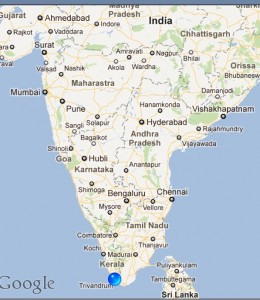 presence of Dr. Raj to his patients. We were given the great privilege of being allowed to shadow Dr. Raj during a day of home visits to various patients of Pallium India, the nonprofit he founded.
presence of Dr. Raj to his patients. We were given the great privilege of being allowed to shadow Dr. Raj during a day of home visits to various patients of Pallium India, the nonprofit he founded.
Who is Dr. Rajagopal
Dr. Raj is responsible for beginning the palliative care movement in India. He tells me that while the goal of palliative care might be the same in India as it is in England, where the modern hospice movement was started, the implementation is different. Dr. Raj feels that to simply pick up and transplant palliative care as it has been developed in the West can inadvertently have consequences that cause more suffering –when the main goal of palliative care is to reduce suffering. Dr, Raj is indeed a unique individual; he is both a visionary and a worker in the trenches. To follow him for a day doing home visits was inspiring. It was also a primer in how to do this kind of patient care.
Dr. Raj pointed out to me the four domains of patient care that were outlined by Cicely Saunders, the founder of the modern hospice movement. The four interlocking domains are Physical, Emotional, Social, and Spiritual. It is certainly a tall order for anyone to provide such comprehensive care, and to do it in low resource settings is even more challenging.
A Day in the Life– Implementing Palliative Care in India
As we drove into some of the poorest communities in Southern India, Dr. Raj and his team, a nurse, a social worker, and a driver went about their routine. Patient files are reviewed as we travel in the van. The size of the patient files is notable. After Dr. Raj read the file a bit, he begins to tell us the context of the family we are about to see. We get a succinct yet
thorough description of the family composition and history. The level of detail is impressive and we even had a few questions about the family that Dr. Raj answered from the record. I asked him when he last saw the family and he said that this was his first visit to them. There are three other teams conducting home visits and so the family has been seen by the other teams in the past. It is amazing to see the level of detail that is recorded from the home visit. From these notes, other services from nutrition, to physical therapy, to social work are provided –all driven initially from the teams’ weekly or fortnightly visits.
As we arrive, Dr. Raj gives warm and respectful greetings. He makes use of his reading of the chart right away to let the family know that he is up to speed on the situation even though this is his first time seeing them. Telling and retelling the story can be a help, at times, for a family but to have to do it with every healthcare worker that shows up, can become a burden.
In the home visit, Dr. Raj is totally in his element. Calm, positive, and respectful, he has a way of making the patient and the family feel that he has all the time in the world to spend with them –they have no idea that he has six more home visits to do. His careful touch, his undivided attention, his deep listening, his affirming comments are all the epitome of what a home visit should be. He listens and draws
out information to help him tweak the treatment plan based on what has happened since the previous home visit. As he leaves, he has given not only some medicines and ordered some more physical therapy but he has also given the family and the patient dignity, respect, and acknowledgment through his manner, his interactions, and his presence.
And, of course, as we make it back to the van, it’s time for Dr. Raj to write page after page of notes so the follow-up treatments can be done and so the next home visitor can pick up right where he left off.
CFHI Partners Develop Competency-Based Medical Education
What is Competency Based Education?
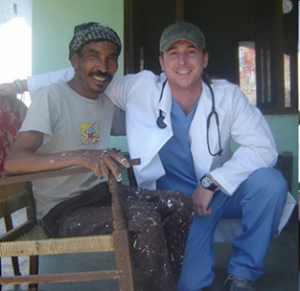 Competency-based education (known as CBE) has been all the rage in medical education for nearly a decade. Competency in this realm has been described as the “habitual and judicious use of communication, knowledge, technical skills, clinical reasoning, emotions, values, and reflection in daily practice for the benefit of the individual and the community being served” Continue reading
Competency-based education (known as CBE) has been all the rage in medical education for nearly a decade. Competency in this realm has been described as the “habitual and judicious use of communication, knowledge, technical skills, clinical reasoning, emotions, values, and reflection in daily practice for the benefit of the individual and the community being served” Continue reading
CFHI Featured in Everyday Ambassador Blog
We at Child Family Health International (CFHI) are deeply honored to be featured in the Everyday Ambassador blog post by Kate Otto. Kate’s own accomplishments in global citizenship and smart diplomacy are considerable for anyone, especially for someone at such an early point in her career. She is a great example for students today who are interested in global service.
CFHI is equally proud to be a member of the International Volunteer Programs Association (IVPA), also featured in the blog post.
Many CFHI alumni are already doing their part in the Global Health field. With over 6,000 alumni now, we have a wonderful, growing family of everyday ambassadors who advocate and educate through their everyday activities. Through their first-hand accounts of shadowing local healthcare workers in underserved and low-resourced settings, they can speak with conviction and in compelling stories about the similarities and the differences of healthcare systems, and about important global health issues. Whether they do it in a professional capacity as a lecturer or professor, or in the informal setting of a party or a dinner, they can be equally effective in telling the story and enlightening people about global realities, thereby each doing his or her own part to bring us all closer together as the human family and improve the health of the world community.
You don’t have to be abroad to be making a difference. Visit our Facebook and LinkedIn pages and join in the conversations that are happening with people all around the globe. Follow #GlobalHealth on Twitter and keep yourself current on issues and causes. Share all of this with your own social networks and you will be surprised how much influence you can have as an individual. Our world is, in so many ways, becoming a ‘smaller place’. Be a part of it; participate!
World Health Day 2011
Happy World Health Day, April 7, 2011!
Each year on the anniversary of the founding of the World Health Organization, we celebrate World Health Day.
 This year the WHO is using the observance of World Health Day to promote the understanding of a serious issue and to work together to combat it. The issue is the spread of anitmicrobial resistance. The World Health Organization’s website has a great deal of information including a WHO Six-Point Policy Package.
This year the WHO is using the observance of World Health Day to promote the understanding of a serious issue and to work together to combat it. The issue is the spread of anitmicrobial resistance. The World Health Organization’s website has a great deal of information including a WHO Six-Point Policy Package.
We also this this is a perfect opportunity to invite people to utilize and support the outstanding resources of the Hesperian Foundation. Our great friends at Hesperian have resources in many different languages focused on community health and primary care. They even have great resources to address antimicrobial resistance at the community health worker level that you can access by clicking on the image above.
Visit their website and find a wealth of information and resources for the venerable classic Where There Is No Doctor, to the most recent information on Disaster Response for Japan.
Making Global Health Knowledge a Requirement for MD Students
A Post From CFHI’s Medical Director:
I’m just returning from conducting a workshop at the NEGEA Regional Conference. NEGEA is the Northeast educator’s chapter of the AAMC – a gathering of the people who oversee medical student and resident education. Just like many in global health medical education, they are grappling with how to get their hands around the subject and figure out how to increase collaboration.
Continue reading
Celebrate 50 Years of Peace Corps –Sign the Service World Declaration
 CFHI is happy to celebrate the 50th anniversary of the start of the Peace Corps on March 1, 1961. As a member organization of the Building Bridges Coalition and the International Volunteer Programs Association, CFHI joins with other member organizations in issuing the following letter inviting you to sign the Service World Declaration. You can see previous postings on this Blog about service world here.
CFHI is happy to celebrate the 50th anniversary of the start of the Peace Corps on March 1, 1961. As a member organization of the Building Bridges Coalition and the International Volunteer Programs Association, CFHI joins with other member organizations in issuing the following letter inviting you to sign the Service World Declaration. You can see previous postings on this Blog about service world here.
_____________________________
Dear Friends;
On March 1, 1961, President John F. Kennedy announced the creation of the United States Peace Corps. This Tuesday, March 1, 2011 is the 50th Anniversary of that historic occasion. We at Child Family Health International are asking you to honor that event by signing the ServiceWorld International Volunteer Service Declaration. It is a simple pledge to encourage expansion of such efforts and that you stand ready to be of service. We and our colleagues in other organizations hope to have 100,000 Americans or more make such a commitment.
The Peace Corps was the first national organization in the world dedicated to international volunteer service. In the past 50 years, the Peace Corps has engaged millions of people from all cultures and nationalities in the search for common ground, and has inspired countless organizations of every type, foreign and domestic, all over the world. We at CFHI are a part of this legacy and whether you have served or are thinking of doing so, you are as well.
You can make a difference today. All you need to do is to join us in signing the International Volunteer Service Declaration. For more information about ServiceWorld and to sign this Declaration on this important date, please visit the Service World Website.
President Kennedy and the first Peace Corps Director Sargent Shriver envisioned 100,000 Americans serving abroad every year. Imagine the impact this would have had on the world if such an effort had been realized 50 years ago and replicated by other nations. ServiceWorld is ambitious, as it seeks to make this vision come true today.
While the current budget crisis makes this moment a challenging time to promote new initiatives, please remember that it is often during such occasions that old paradigms are changed, when necessity and creativity generate needed innovation, and when a “quantum leap” forward is truly possible. Now is such a time for citizen diplomacy and international volunteer service. Help us all become part of those new solutions. After you sign the Declaration, please forward this request to your friends and ask them to join you in this effort, as well.
Sincerely,
Child Family Health International
The Roots Have Taken Hold –A Follow-up on a Success Story in the Making in South Africa
In October of 2009, fresh from a visit to South Africa, I wrote an entry to this Blog called The Roots in Grassroots –Ukwanda Rural Health Program. I was so impressed with the intentional efforts of the University of Stellenbosch to successfully bring primary health care to Avian Park, an underserved community in the rural areas well north of Cape Town. CFHI’s work has always intentionally been at the community level so this was the first time that we were helping to fund a project of a university. On paper, it looked like a serious effort to truly do the relationship building and ground work necessary to successfully establish the first primary healthcare facility for this poor but growing community. Our contacts on the ground were also very enthusiastic about this initiative and so CFHI chose to help support it.
What I saw in 2009 was an idea beginning to take form. What had looked so possible on paper, was proving to be a significant challenge to implement.
I saw a very run down set of metal freight containers being used as a makeshift TB clinic. I saw some initial linkages with the community but everything was still new and tenuous. CFHI’s commitment was funding that would be used to renovate the freight containers to make them fully functional. The project was already well beyond its targeted schedule and I could see during my visit that the freight containers were not in good enough condition to be renovated but would need to be replaced. Stellenbosch was able to get some additional funding as well as some in-kind help to make the new containers possible. Concerns about acquiring the land where the new clinic would be, the full support of the local political and community leaders, and other logistical details were still not resolved. Success felt illusive. Yet, in the face of the many challenges, the Ukwanda team from Stellenbosch chose to dig in deeper, engaging the community, dealing with their concerns and creatively finding the resources to deal with many unforeseen issues that arose.
At a stage like this, I am, quite frankly, used to seeing a big university either pull back its funding and sunset the project, or do an end run around the community and find a maneuver that would give them the legal security they need to move forward even if it does not lead to community support. Instead of using the university’s paid legal teams to get it out of a jam, the University of Stellenbosch chose to involve its School of Law and get faculty and students from this arm of the university to research creative solutions.
This week, I paid another visit to Avian Park and I met with Prof. Hoffie Conradie, also a medical doctor whose blood, sweat, and tears have flowed into this clinic for years now. What I saw this time was the brand new set of freight containers fully set up, painted, and functioning at about 80% of the planned use.
In addition to the original TB clinic, there is now an ARV clinic and a team of home-based care workers based out of the clinic. Weekly physician clinic hours by Dr. Conradie are well attended and welcomed by the community. Still to come will be family planning and other health education initiatives. While a water line has made it to the clinic, electricity is still lacking but this is in the works and seen only as a minor inconvenience. The clinic was bustling with activity and clearly has become a focal point of the community.
Even more impressive was that I just happened to arrive as a team from the University Of Stellenbosch School Of Sociology was just concluding an intensive study of Avian Park. A social anthropology professor and his students had made many visits and conducted house to house interviews. The students made use of volunteers from the community, mostly young people who assisted the students in navigating the unpaved maze of roads and any unfamiliar customs or local norms. The result is a significant body of primary research data that will now be analyzed and synthesized to produce a profile of the community that will not only help the Medical School in its work in the community but also all the other arms of the university; agriculture, theology, social work, as they also look to begin projects in Avian Park.
Meeting later with Project Coordinator, Lindsay Meyer, in Cape Town, she attributed the tremendous cross pollination of efforts from Stellenbosch at Avian Park to the leadership of the university. The Rector of the University of Stellenbosch has motivated and guided his faculty across all schools to develop strategic plans that have goals that are connected to the Millennium Development Goals of the United Nations. All schools and departments are also required to have initiatives that are benefiting the community in some way. With this kind of guidance, a university that often has so many disparate activities can instead become like an orchestra, each producing their own sound but from the same sheet of music.
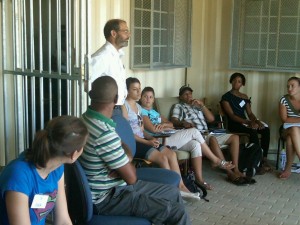
Prof Hoffie Conradie addresses sociology & medical studnets and community members at Avain Park clinic
And so it was in Avian Park. The sociology students and the medical students were each doing their own endeavors but in a way that appeared to the community and to this outsider as a coordinated effort that will build on each other. Universities can easily become a place of many silos of information growing ever higher and rarely moving horizontally in a way that combines data for richer analysis and in a way that can most effectively benefit communities. How refreshing it is to see what can happen when the full resources of a university are coordinated and focused to help a community.
Our hats are off to the University of Stellenbosch and its Ukwanda Rural Health Project and the Avian Park Rural Clinic for their dedication and commitment to community-based work done well!
Familiarity That Melts Away Mistrust -Michelle Obama
As part of the official visit of President Hu to Washington, First Lady, Michelle Obama spoke to a captivated audience at Howard University saying that when you go abroad, “you are shaping the image of America projected to the rest of the world.” While Mrs. Obama was trying to promote a campaign to increase the number of students going to China, many of her comments are applicable to any cross cultural learning experience:
“…studying abroad isn’t just an important part of a well-rounded educational experience. It’s also becoming increasingly important for success in the modern global economy. Getting ahead in today’s workplaces isn’t just about the skills you bring from the classroom. It’s also about the experience you have with the world beyond our borders — with people, and languages, and cultures that are very different from our own.”
Last Spring, her husband, President Barack Obama, spoke to students at the University of Michigan saying: “As our world grows smaller, more connected. You will live and work with more people who don’t look like you, or think like you, or come from where you come from.” And almost in a response to these words by her husband, Mrs. Obama went on to say:
“That’s why it is so important for more of our young people to live and study in each other’s countries. That’s how, student by student, we develop that habit of cooperation, by immersing yourself in someone else’s culture, by sharing your stories and letting them share theirs, by taking the time to get past the stereotypes and misperceptions that too often divide us.
That’s how you build that familiarity that melts away mistrust. That’s how you begin to see yourselves in one another and realize how much we all share, no matter where we live. ”
CFHI programs have always focused on immersion into a culture, into a different helathcare system. Rather than staging impressive extraordinary displays for students, CHFI’s Global Health Immersion Programs give students a real slice of life, giving the participant and authentic experience of what it is like to be a health professional in that country. Some days may be very low key, other days in a hospital may be overwhelming. Regardless of the program, the bonds that students have made with professionals, with host families and with each other are very strong and lasting.
World AIDS Day – What We Can Celebrate
World AIDS Day gives us a chance as a world community to stop and get some perspective on this epidemic that has been with us now for three decades. In the past this day served as a day for us to remember with dignity those we lost to this horrible disease and as a day for carrying out advocacy to improve and better coordinate our efforts at combating this killer. Today is still a day for us to collectively morn the incomprehensible human toll. Today is still a day to increase awareness and mobilize efforts that transcend the hurdles of politics, prejudice, and lack of knowledge. Indeed “Health, HIV, and human rights are inextricably linked,” as the Director General of the World Health Organization reminds us in her statement today.
On this World AIDS Day in 2010, I am struck by the great amount of information we now have. So today is also a day for us to look back and see from whence we have come in this effort. There is great loss, and yes, there needs to be more committed to this effort but the work has gone on for more than 25 years now and there are milestones and accomplishments we must not forget. The numbers are still staggering, over 33 million cases worldwide, and with over two and one half million newly infected, etc, etc. And on the face of it, this can be enough to keep someone feeling discouraged. But there is hope. There are things to celebrate.
If we look deeper into the Global Report from UNAIDS, we find that although the greatest burden of disease is still in Sub-Saharan Africa, this is also one of the greatest success stories as the rate if infection has dropped considerably. The report concludes, “In 22 countries in sub-Saharan Africa, the HIV incidence rate declined by more than 25% between 2001 and 2009.”
The Global Report contains a great deal of information that is well presented, and with little effort, one can gain a great deal of perspective not only on the huge effort that we are still deeply engaged in, but also some real sense of what has been accomplished -like the “Significant progress in the virtual elimination of HIV to babies.” Make one of your “things to do” this World AIDS Day a visit to the UNAIDS Report on the Global AIDS Epidemic 2010. It contains an AIDS info Database, Epidemiology Slides, a Global Scorecard, and more. One thing we have clearly done as a global community is arm ourselves with a wealth of information as we combat this continuing threat. Spend 20 or 30 minutes today educating yourself about one of the world’s greatest crises.
Finally there is one more thing that must be celebrated today and that is the the tremendous and heroic efforts of healthcare workers on the front lines of this epidemic. One of the great privileges for me as part of CFHI, is the opportunity I get to visit doctors, nursers, and other healthcare workers in the field. Finding local health professionals who are dedicated to their own underserved communities and trying to support them in their work is at the heart of what we do. We see them in hospital wards that are overflowing, we see them on strenuous trips to rural areas to test, educate, and treat -thus making healthcare accessible to more of the population. We see them in hospitals where the staff room has become a small ward or infection control area thus leaving them spending long hours with no place to go for a break. We see them in clinics working tirelessly as as line of patients stretches out the door and down the street, more than a city block. We see them morn the loss not only of patients but of so many of their colleagues, and yet they continue. We see them in these situations every day, and we see them more dedicated and more earnest in their efforts each day. These are the real heroes in this global fight and we salute you on this World AIDS Day and we pledge our continued efforts to help support and champion your work.
Global Health TV Looks at CFHI Program In India
 Global Health TV, based in London, recently visited one of CFHI’s Community Health Projects in India. The Catch Them Young Program is a health education program directed at youth ages 12-19 in a rural area outside the city of Pune. This is one example of a typical CFHI Community Health Project that originates at the local level and therefore has local ownership. CFHI has been happy to provide some of the funding to advance this project and to support the great dedication that local health professionals and community workers have to their own underserved communities.
Global Health TV, based in London, recently visited one of CFHI’s Community Health Projects in India. The Catch Them Young Program is a health education program directed at youth ages 12-19 in a rural area outside the city of Pune. This is one example of a typical CFHI Community Health Project that originates at the local level and therefore has local ownership. CFHI has been happy to provide some of the funding to advance this project and to support the great dedication that local health professionals and community workers have to their own underserved communities.
The 5 minute short film can be seen on the Global Health TV website. We have posted it to the CFHI YouTube Channel as well. It also shows one of CFHI’s Global Health Immersion Programs in India. CFHI seeks to identify local community health professionals who are dedicated to local underserved communities.
These unsung heroes are local experts and CFHI works with them to develop the 4-12 week Global Health Immersion Programs that international students of the health professions attend. The programs are empowering to the local community as the community sees their own health professionals instructing and mentoring international students. The film had its debut at the Canadian Conference on Global Health in Ottawa, November 1-3, 2010.
Report From Ottawa –The Canadian Global Health Conference
Global Health: a Humanitarian Crisis? With this urgent theme, the Canadian Society for International Health (CSIH) is holding its annual conference here in Ottawa.  Recognizing the progress and successes in the arena of Global Health, one of the messages of this conference is to not forget the crisis of the billions of people around the world living on less than $2.00 per day. With this reality, much of the focus here has been on issues of equity.
Recognizing the progress and successes in the arena of Global Health, one of the messages of this conference is to not forget the crisis of the billions of people around the world living on less than $2.00 per day. With this reality, much of the focus here has been on issues of equity.
While the sessions and sharing of ideas have been strong and fruitful, I have found a remarkable effort almost behind the scenes here to include and involve students in this professional conference. I have had the opportunity this year to speak with students in Australia, the UK, the US, and now here in Canada and in all places the interest in Global Health is continuing to grow. Everywhere I go, I find students looking for career paths and guidance in the field of Global Health. Here in Ottawa, I have seen a level of inclusion, mentoring, and respect for students that I have never seen before. Students from across Canada are here with financial and moral support from their schools and students themselves are engaged with the academic world as well as the professional world. Students are taken seriously here and they are responding and rising to that expectation. It is a lesson for Global Health educators around the world to heed.
The leadership of CSIH, as well as the national academic leaders are setting the example by intentionally engaging in efforts to cultivate, nurture and mentor the Global Health professionals of the future not just in the classroom, and not just though international trips but in their own offices and their daily work. Because they are truly engaging and listening to the students, educators are also able to take the appropriate next steps to advance Global Health education and not just marvel at the surge in student interest. Great work has been done on a set of Global Health Core Competencies that can serve as a much needed foundation for faculty and students alike.
CFHI Alum Reflects on Her Experience in South Africa
Stella Chiu who spent part of her summer on one of CFHI’s Global Health Immersion Programs in South Africa contributed to a blog on the IE3 Global Internships website. Her blog post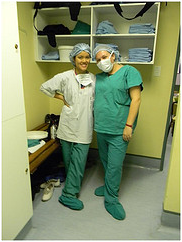 Coming Home with New Perspectives is an honest sharing of her thoughts as she is still in the re-entry process. Stella says, “I haven’t had any major problems re-integrating. However, the only difficulties I’ve encountered are through the new perspectives that I’ve gained.”
Coming Home with New Perspectives is an honest sharing of her thoughts as she is still in the re-entry process. Stella says, “I haven’t had any major problems re-integrating. However, the only difficulties I’ve encountered are through the new perspectives that I’ve gained.”
Stella reports that after being completely immersed in the South African culture and healthcare system, and especially with the warm welcome of her South African host family, she now finds herself, at times, ‘homesick’ for South Africa. Stella recommends to others who go abroad to build in time to reflect after coming home, to “sit down and think” so that you can become aware of how your perspective has changed “both personally and professionally” by what you have experienced. She says of her friends, “Sometimes it is hard for others to understand my outlook on certain things because they have not experienced what I have experienced.”
As part of her own reflection, Stella shares, “I am grateful for the opportunity CHFI-South Africa has given me in developing my clinical skills and finding my niche. I did rotations in surgery, pediatrics, ophthalmology, and in internal medicine and found an unexpected love for surgery. I grew to understand South Africa’s health care system, as well as its deficiencies, setting the groundwork for when I can return someday to work. I have built lifelong relationships with students in the program, and the families that I stayed with. I know that I will always have a home in South Africa.”
We wish Stella well as she continues her re-entry and we know that her host family and those who worked with her in South Africa were grateful for her presence and will never forget her.




